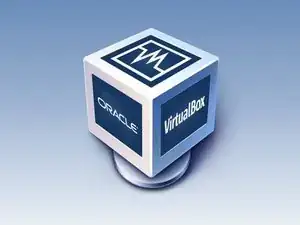Introduction
VirtualBox is an extremely versatile, and powerful virtualization software, that can allow users to run multiple operating systems on a single physical machine.
-
-
Download the VirtualBox software for your machine from here.
-
Click on the VirtualBox Installer to start the installation wizard. Once the wizard is started you can choose which features are installed.
-
On the Ready to Install Screen, hit install to start the installation process. After the installation process is finished, you can tick the checkbox for starting the VM is installed.
-
-
-
To create a new virtual machine you can either click on Machine > New, or choose the blue star to create a new VM. The Virtual Machine Wizard will appear, and you will be prompted to click Next.
-
-
-
Once you hit next, you will be prompted to enter a name of your choice for your virtual machine, along with the information for the operating system you wish to virtualize.
-
You will also have to designate the amount of memory (RAM) you want to the virtual machine to use.
-
-
-
Once the initial properties are set, you will need to allocate the amount of storage you want your virtual machine to have.
-
Choose the Create a virtual hard disk now option and click Create to proceed.
-
Select the desired hard disk file type and storage location.
-
Choose the disk size and storage allocation options, and then click Create to create the virtual hard disk.
-
-
-
Back in the VirtualBox Manager, select the newly created virtual machine and click on the Settings button.
-
-
-
Click on the Start button in the VirtualBox Manager to launch the virtual machine.
-
Follow the prompts to install the operating system of your choice within the virtual machine.
-
Insert the installation media (ISO file, CD/DVD, etc.) and proceed with the installation process.
-
-
-
After the operating system installation is complete, you have the option to install VirtualBox Guest Additions.
-
Select Devices in the VirtualBox menu and choose Insert Guest Additions CD image.
-
Follow the on-screen instructions to install the Guest Additions.
-
-
-
Once the installation and configuration are complete, you can start the virtual machine by selecting it in the VirtualBox Manager and clicking on the Start button.
-
Virtual machines provide a flexible and efficient way to run multiple operating systems on a single physical machine, allowing you to explore different environments and perform various tasks.


Où peut-il chercher les machines virtuelles , par exemple je cherche Windows 7 en arabe
abderrahim dehbaoui -
Salut, les machines virtuelles sont créées avec des fichiers ISO. Généralement, ceux-ci se trouvent sur le site du distributeur officiel du système d'exploitation, cependant, Microsoft ne fournit plus l'ISO pour 7. Vous pouvez utiliser l'IOS à partir d'un disque physique Windows 7 si vous en trouvez un.
Jacob Mehnert -